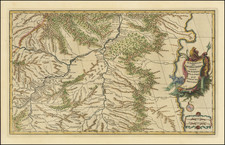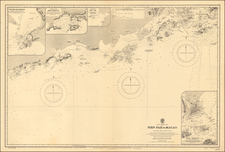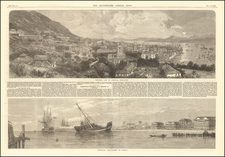Highly detailed map of Manchuria and Korea, prepared by the Military Information Division of the United States War Department in Washington.
The map extends from Seoul, Chefoo, and Port Arthur in the South, showing in great detail the northeastern part of China, with great topopgraphical precision. The roads are identified in Red, with provincial borders in Green.
The map was prepared following the conclusion of the Russo-Japanese War (1904-1905), during which time the two rival nations sought to increase their controls over Manchuria and Korea. The major theatres of operations were the Liaodong Peninsula and Mukden in Southern Manchuria, and the seas around Korea, Japan, and the Yellow Sea.
Russia sought a warm-water port on the Pacific Ocean for their navy and for maritime trade. Vladivostok was operational only during the summer, whereas Port Arthur, a naval base in Liaotung Province leased to Russia by China, was operational all year. Since the end of the First Sino-Japanese War in 1895, negotiations between Russia and Japan had proved impractical. Russia had demonstrated an expansionist policy in Manchuria dating to the reign of Ivan the Terrible in the 16th century.
Through threat of Russian expansion, Japan offered to recognize Russian dominance in Manchuria in exchange for recognition of Korea as within the Japanese sphere of influence. Russia refused and demanded Korea north of the 39th parallel to be a neutral buffer zone between Russia and Japan. The Japanese government perceived a Russian threat to its strategic interests and chose to go to war. After negotiations broke down in 1904, the Japanese Navy opened hostilities by attacking the Russian Eastern Fleet at Port Arthur in a surprise attack.
Russia suffered numerous defeats to Japan, but Tsar Nicholas II was convinced that Russia would win and chose to remain engaged in the war; at first, to await the outcomes of certain naval battles, and later to preserve the dignity of Russia by averting a "humiliating peace". The war concluded with the Treaty of Portsmouth, mediated by US President Theodore Roosevelt at the Portsmouth Naval Shipyard on Seavey's Island, Kittery, Maine, while the delegates stayed in Portsmouth, New Hampshire.









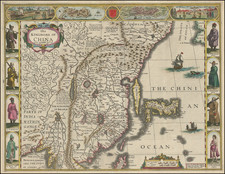
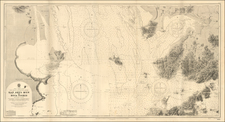
![[Macao, Hong Kong & Environs] Carte de L'Entree de la Riviere De Canton dans la Chine](https://storage.googleapis.com/raremaps/img/small/74473.jpg)
